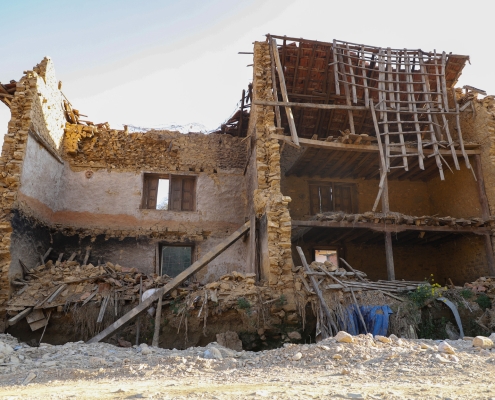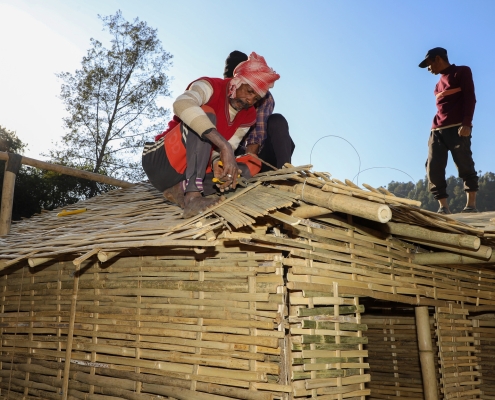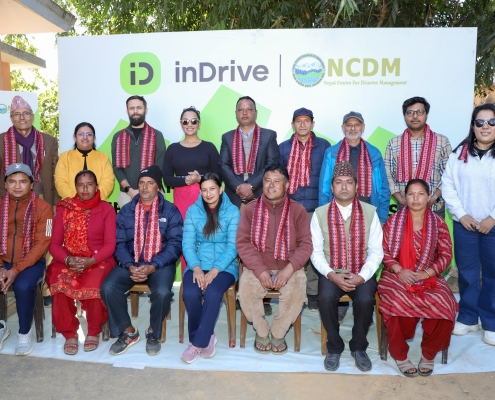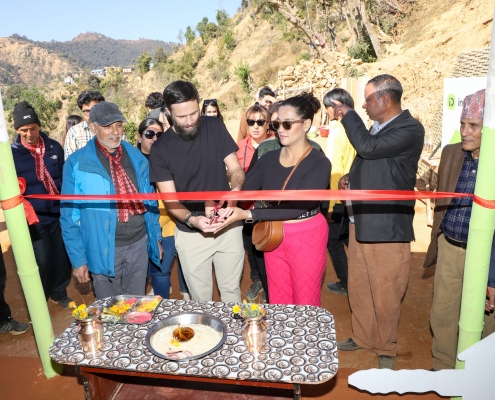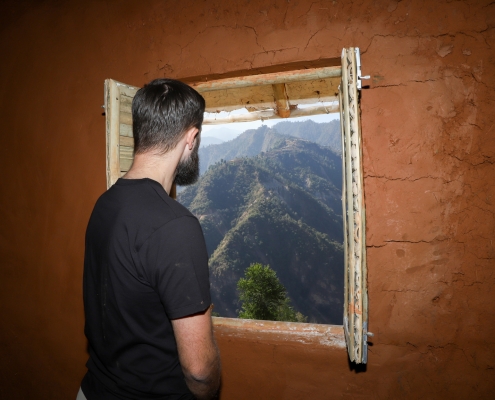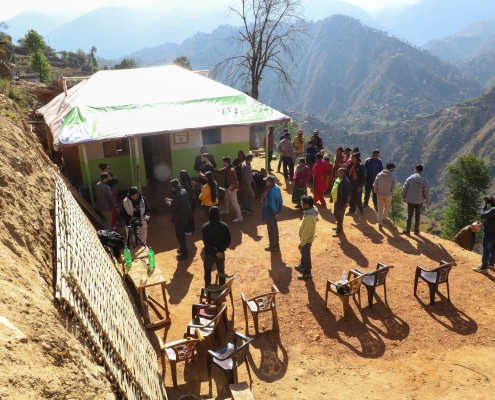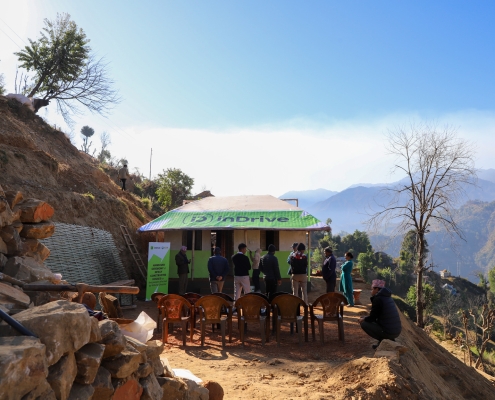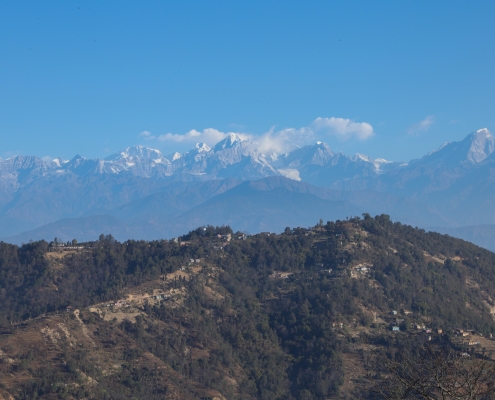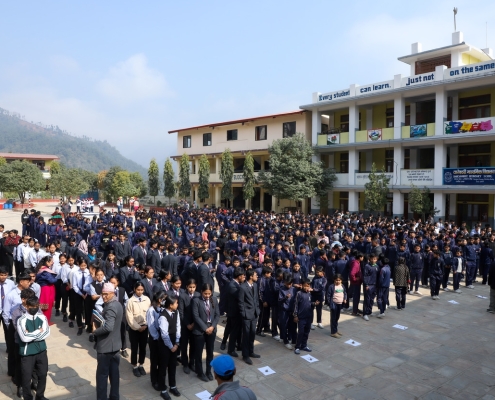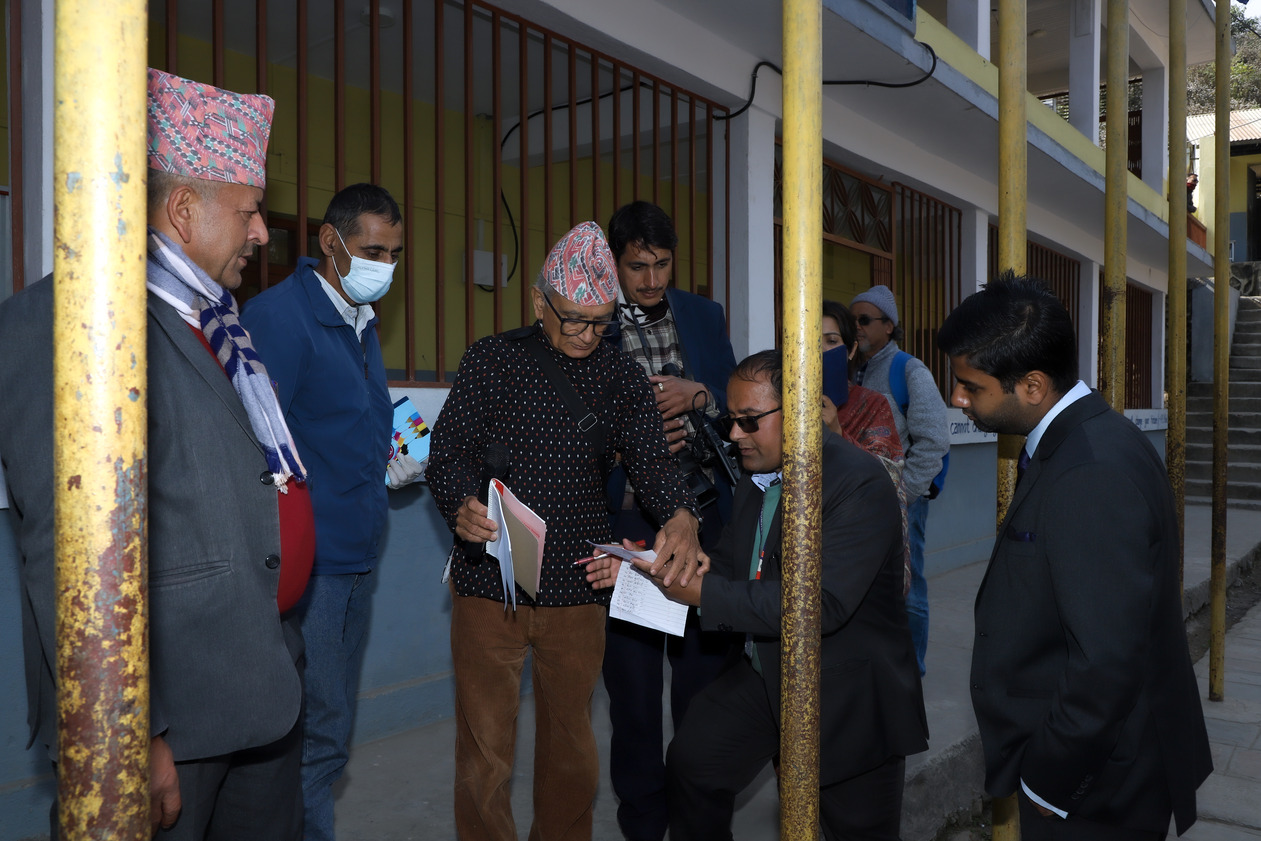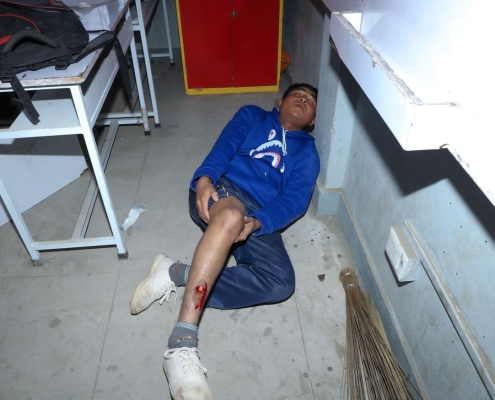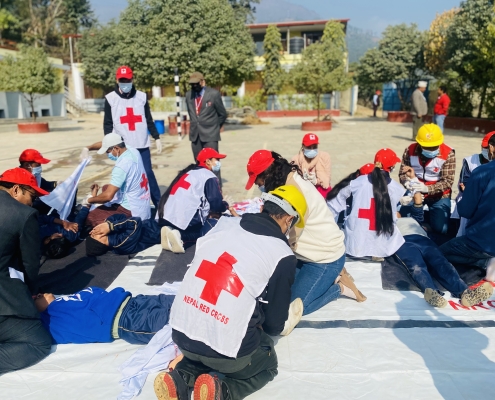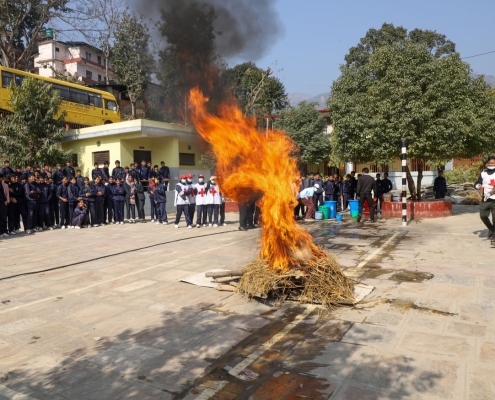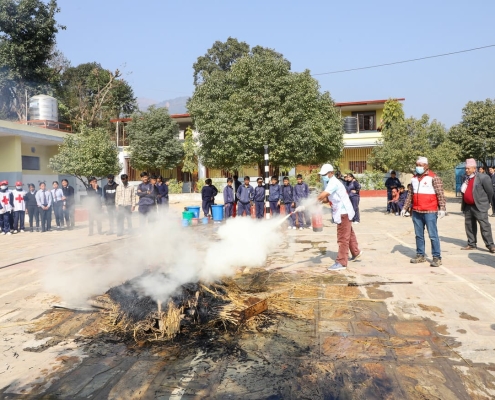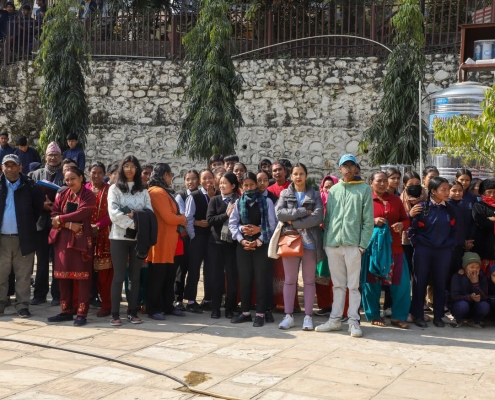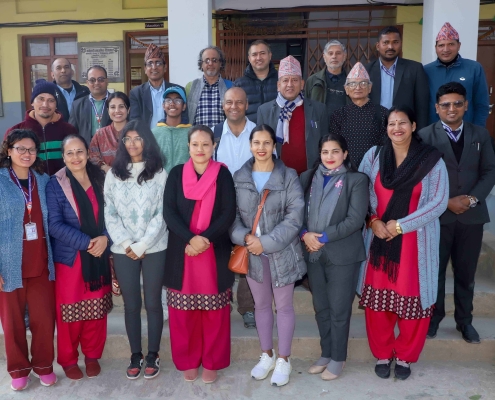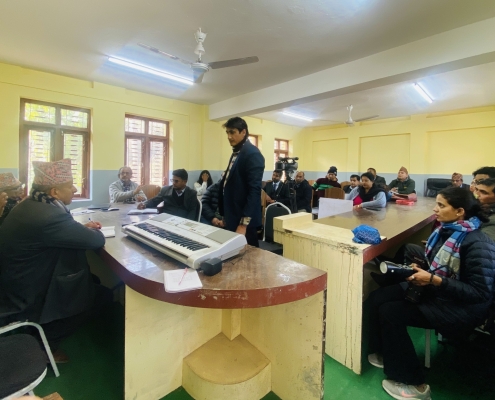The Nepal Centre for Disaster Management (NCDM) has undertaken a crucial initiative to provide shelter for families affected by floods and landslides in Kavrepalanchok District. This effort has been made possible through the generous contribution of NPR 3,355,500 from the ride-sharing company “Indrive” to NCDM for the construction of temporary houses for affected families. As part of this initiative, NCDM and Indrive recently inaugurated one of the newly constructed temporary shelter and officially handed over the keys to a displaced family.
Three houses are under construction in Namobuddha Municipality and Roshi Rural Municipality of Kavrepalanchok district. The houses have been designed by NCDM Vice President, Dr. Jiba Raj Pokharel, ensuring both structural safety and environmental sustainability. Each home includes two bedrooms, a veranda, a toilet, a dining area, and a kitchen, providing essential living spaces for the affected families. A key feature of these houses is their earthquake-resistant design, using locally available materials such as bamboo and mud. These materials not only make the homes cost-effective and eco-friendly but also provide natural insulation, keeping them warm in winter and cool in summer.
During the handover, representatives from NCDM and Indrive emphasized the importance of sustainable housing solutions in disaster response and recovery. Mark Tully, Asia Pacific General Director of Indrive, emphasized that this initiative aims to bring positive change in the lives of disaster victims, helping them rebuild their future with dignity and security. NCDM officials highlighted that this collaboration reflects the organization’s commitment to supporting disaster-affected communities and contributing to long-term recovery efforts.

